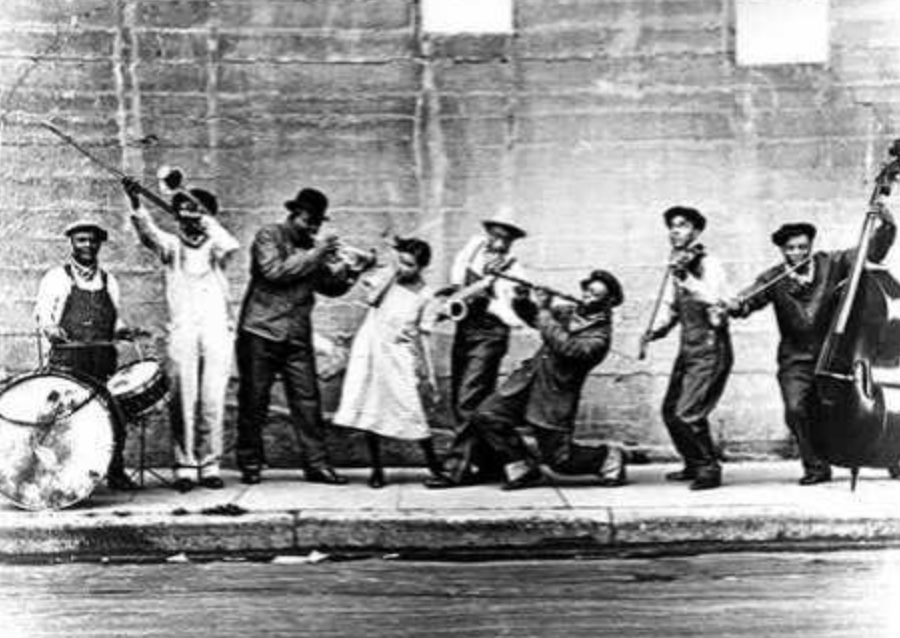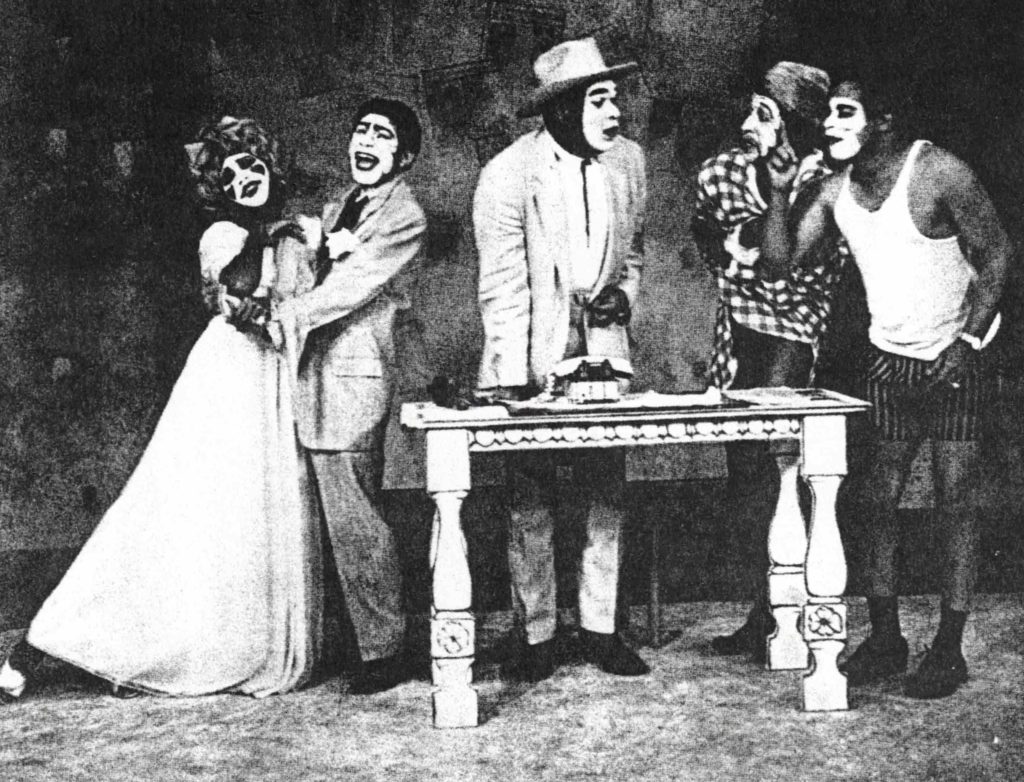There’s an experiment I used to do when I was a high school teacher. I would ask one of my musically inclined charges whether she knew where rock and roll came from. I particularly liked one response I got, from a student who looked at me as if I were a side dish she hadn’t ordered. It came, she explained confidently if not patiently, from a juke box.[1]
[1] A loudspeaker apparatus in the corner of a
bar or malt shop, stocked with 45 rpm records.
Kind of like a DJ without the DJ. Or kind of like Spotify.
Not long after that enlightening interchange, in pursuit of my night job as an alleged (never convicted) satirist/songster, I was hard at work on—or more likely idly toying with—a parody version of “Has Anybody Seen My Gal?” as a comment on our unfolding invasion of Panama. You guessed it, “Has Anybody Seen My Canal?” I hoped it would be at least minimally thought-provoking, as viral hadn’t been invented yet.
But a question had been eating at me about the sources of the songs I was in the habit of plundering for my own political purposes: where had they been plundered from in the first place? I had already learned that many songs I picked up from 1960s rock bands had been picked up by them from 1930s blues singers. What about the rest of the songs I was personally heisting? I began to badger fellow musicians and music teachers who might help me with knowledge about such things. I started with one area that had been mystifying me: the relationship between Broadway musicals and jazz. A few responses:

“Jazz musicians play show tunes.”
“Jazz musicians are classically trained.”
“There isn’t any relationship.”
“There are a lot of things you could analyze, but doesn’t that take the fun out of things?”
These answers set me to thinking. As a musician who grew up on music from all over the world, I always thought of myself as both a musically and socially aware kind of guy, conscious of racial and cultural conflicts, sensitive to injustice. I knew about the blues origins of rock and roll; I knew there used to be some jazzy Broadway tunes, before Oklahoma! Now I was beginning to learn how much I didn’t know, and coming to realize that many other people didn’t know even more than I didn’t know.
And my questions, which had percolated for years, weren’t only about music: Why are so many White (and other) youths always imitating Black styles in speech, music, dress, etc.—as I myself had done and continue to do, without even noticing it? Why is last week’s slang out of date, and why do I have to go to an inner city high school to catch up? In this nation of “minorities,” what is the “mainstream” popular culture? Is there one?

When a barbershop quartet singer told me that barbershop quartets were originally a Black phenom, I had to sit down and catch my breath. Not because I felt any jealous attachment to my “White heritage,” but because even my most paranoid inner voices hadn’t prepared me for this level of historical befuddlement. Now I was forced to take another listen to some other “White” musical styles as well. I was beginning to hear things I hadn’t heard before, and was reminded of Ralph Ellison’s “Invisible Man,” unacknowledged by society. Was there an Inaudible Beat as well?
This is how I began to read between the musical lines to find some of the hidden relationships among the strands of American musical culture. When, where, how and why did they first weave together? Starting with an exploration of the roots of Broadway show tunes, I was led backwards into Vaudeville and further back to the horrid yet fascinating minstrel shows of the 1840s, then on to the African American barbershops of Florida in the 19th century, through Ragtime to New Orleans and various permutations of jazz, then to Swing and Rock ‘n’ Roll, and later back to the music of the Texas cattle trails of the 1870s. After this, I was tired. But I was also energized: I had found patterns of intercultural interaction that had been hiding in plain sight, but covered by layers of societal misconception and denial.
They say that music tells you who you are. That sounds like something worth knowing; but it only tells us that if we know what to listen for. Maybe, I speculated, a closer look and listen could help sort out the truths hidden behind the tapestry of sound surrounding us.
An Aid To Listening
When one musical genre interacts with another, the product is a new variation, with changes from the previous, suddenly un-hip generation. The beat has evolved, either subtly or brazenly; the use of melody and harmony has morphed, the quality of the tone altered. There are changes in choice of instruments. And of course, hair styles.
Much of this story has been told before, but here I try to knit together the persistent processes that recur through many generations of musical evolution. Along the way, I’ll suggest some sources you can use to flesh out my efforts at explaining these evolutionary steps.
I’ll also suggest an exercise for you, one you can do right there inside your mind. Because we carry inside our heads the sounds of various singers and instruments we’ve heard before, we can understand something of the relationships between musical cousins and nephews and nieces by substituting, in our mind’s ear, one for the other. If you want to hear the influence that swing jazz had on western swing, you could find a Bob Wills and His Texas Playboys song that features a clarinet playing along with the fiddles. But even without the record, you can play—once you’ve heard it twice—”Yellow Rose of Texas” in your mind and add in your own version of Benny Goodman playing along. To understand the relationship of rhythm and blues to rock and roll, you can listen to the early to mid-Rolling Stones and superimpose Muddy Waters’ voice over it. You can sing like Muddy inside your head, because nobody else can hear it. It’s safe.[2]
Of course it’s easier to leave it to the experts, and I’ll try to steer you to some folks who pop up now and then with new/old syntheses of various roots-related sounds, sometimes mixed with the very post-post-modern styles of today’s clubs.
Let us now begin this exploration somewhere near the start. But when do stories start? Depends who’s telling it, doesn’t it? Let’s have a look.
